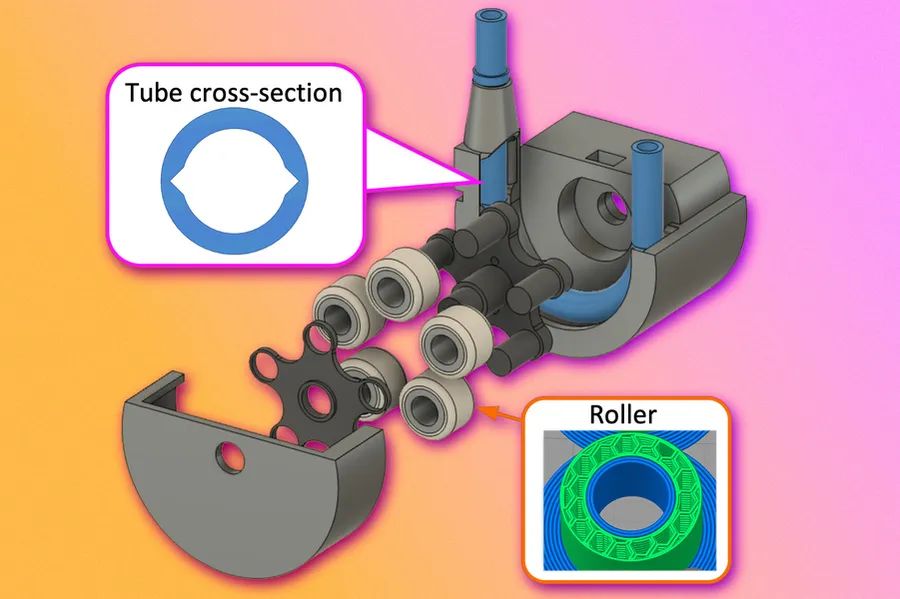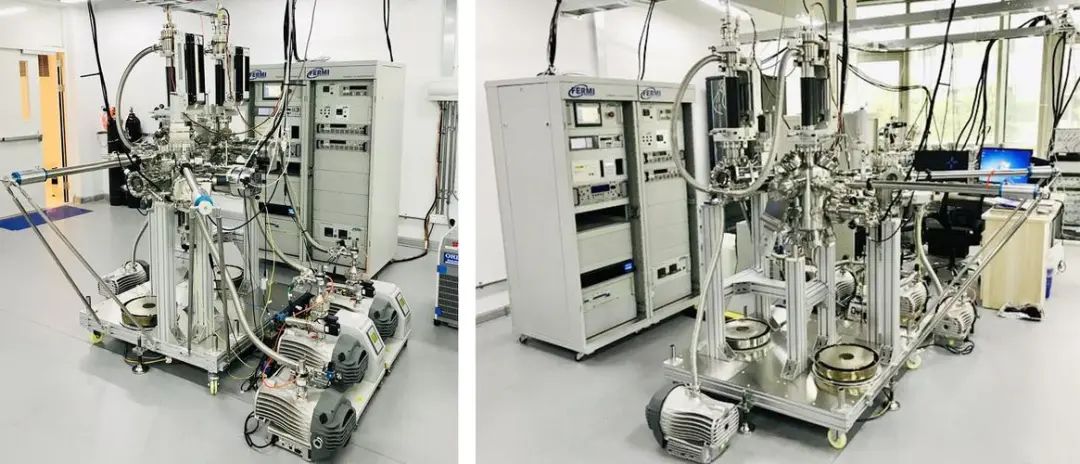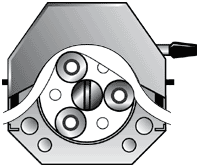
Mass spectrometers are extremely accurate chemical analyzers with a variety of applications, from assessing the safety of drinking water to detecting toxins in a patient's blood. But building a cheap, portable mass spectrometer that can be deployed in remote areas remains a challenge, in part because of the difficulty of miniaturizing it requires a vacuum pump to operate at low cost.

Researchers at MIT have taken a major step toward solving this problem using additive manufacturing. They 3D-printed a miniature version of a vacuum pump, called a peristaltic pump, which is about the size of a human fist.
Their pump can create and hold a vacuum at a pressure an order of magnitude lower than a so-called dry coarse pump, which does not require liquid to create a vacuum and can operate at atmospheric pressure. The researchers' unique design, which can be printed in a single use on a multi-material 3D printer, prevents fluid or gas leakage while minimizing the heat generated by friction during pumping. This increases the service life of the device.
For example, the pump could be integrated into a portable mass spectrometer to monitor soil pollution in remote parts of the world. The device could also be ideal for geological survey equipment going to Mars, as it would be cheaper to launch lightweight pumps into space.

Pump problem
When a sample is pumped through a mass spectrometer, it is stripped of electrons, which converts its atoms into ions. The electromagnetic field manipulates these ions in a vacuum, so their mass can be determined. This information can be used to accurately identify the composition of the sample. Maintaining a vacuum is key because if ions collide with gas molecules in the air, their dynamics change, reducing the specificity of the analysis process and increasing its false positive rate.
Peristaltic pumps are usually used to transport liquids or gases that would contaminate the pump assembly, such as reactive chemicals. They are also used to pump liquids that need to be kept clean, such as blood. The substance being pumped is entirely contained in a flexible tube encircled by a set of rollers. The roller squeezes the tube against the housing as it spins. The pressed part of the tube expands with the motion of the roller, creating a vacuum that draws liquid or gas into the tube.
While these pumps do create a vacuum, design issues limit their use in mass spectrometers. When the roller applies force, the pipe material redistributes, causing gaps that lead to leaks. This problem can be overcome by operating the pump quickly, forcing the fluid through faster than it can leak. But this can cause overheating, which can damage the pump, and gaps remain. To seal the tube completely and create the vacuum needed for the mass spectrometer, the mechanism must apply extra force to squeeze the raised area, causing more damage.
Additive solution
He and his team rethought peristaltic pump designs from the bottom up, looking for ways they could be improved using additive manufacturing. First, by using a multi-material 3D printer, they were able to create a hose that can withstand huge deformation using a special type of super-elastic material.
Then, through an iterative design process, they determined that adding notches to the tube wall would reduce the stress on the material when it was squeezed. With the notch, the tubing does not need to be redistributed to counteract the force from the roller.
The manufacturing precision provided by 3D printing allowed the researchers to produce the exact notch size needed to eliminate the gap. They were also able to change the thickness of the tube to make the wall of the connector area stronger, further reducing the stress on the material.
They used a multi-material 3D printer to print the entire tube in one go, which is important because assembly can introduce defects that cause leaks. To do so, they had to find a way to print the narrow flexible tube vertically, while preventing it from wobbling in the process. Finally, they created a lightweight structure that stabilizes the tube during the printing process, but can be easily peeled off later without damaging the device.
